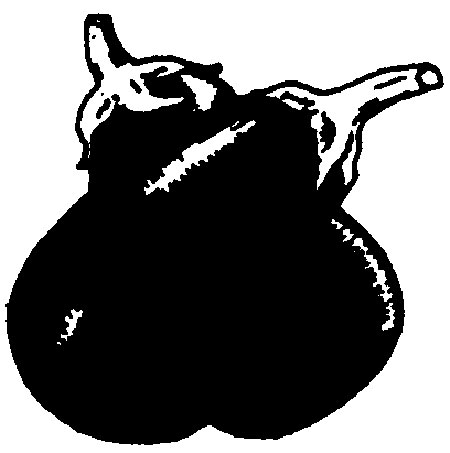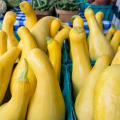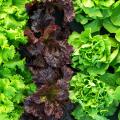Eggplant
Eggplant

Eggplant is an extremely cold-sensitive vegetable, and early planting results in stunted plants. Direct seeding in the garden is not recommended. Start with transplants, either home grown or purchased. Use a starter solution when setting out transplants.
You have a broad choice of varieties when ordering seeds from a catalog, but there is often little or no choice of varieties when purchasing plants. Most plant producers grow only Black Beauty, the old standard, late-maturing variety. New varieties and hybrids offer high yields, earliness, and a choice of size, shape, and color.
Eggplant is in the garden from spring planting until frost, so mulch plants to reduce summer’s heat and drought stress. Side-dress eggplant when plants are half grown and again after first harvest.
Several diseases and insects attack eggplant. The most serious disease is Phomopsis fruit rot. The most serious insect pest is the flea beetle. This small, black insect eats many tiny holes in the leaves and may defoliate and kill plants.
Varieties
- Black Beauty—old standard; low-spreading, bushy plant; fruit round to globe and dark purple; 80 days.
- Florida Market—prolific over a long season; plants tall and upright; fruit long, cylindrical, glossy dark purple; Phomopsis resistant; 85 days.
- Dusky—hybrid; extra early; free setting heavy yielder; fruit deep oval, glossy black; tolerant to tobacco mosaic virus; 63 days.
- Millionaire—Oriental type with purple-calyxed, black fruit.
Publications
News
Did you know yellow squash is in the pumpkin family and are 95 percent water?
Tomatoes are a popular crop, both for commercial growers and home gardeners. Even the best tomato growers run into problems along the way! We put together a simple, easy-to-follow guide to help you spot a few of the most common tomato troubles gardeners see.
Did you know lettuce was one of the first vegetables brought to America by Christopher Columbus? What a great fun fact!




